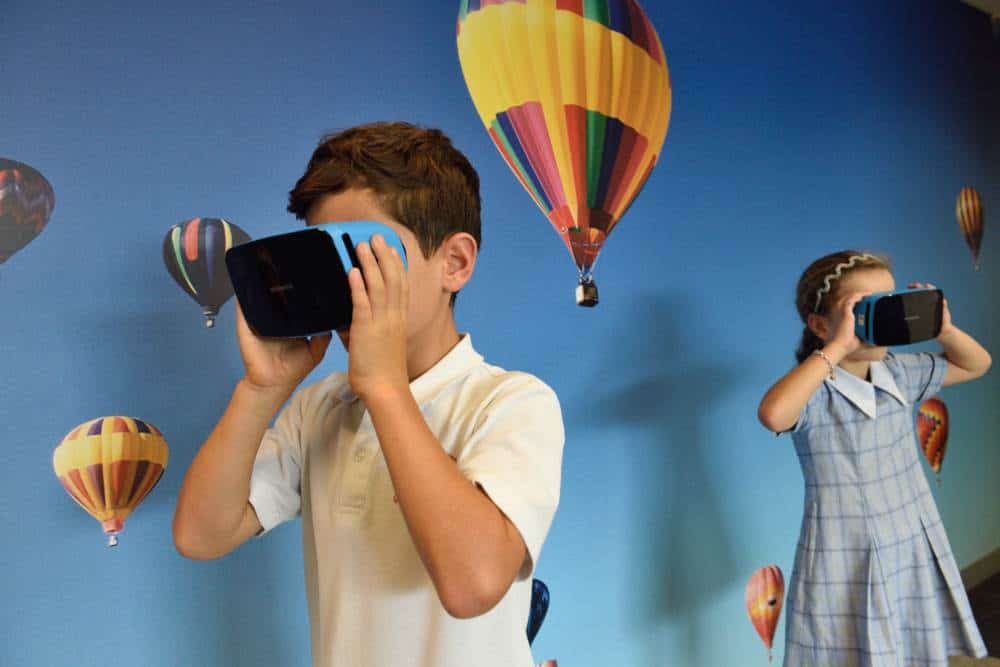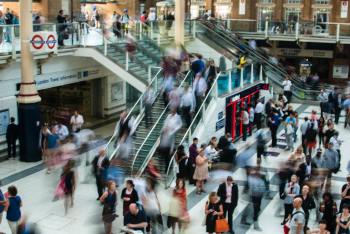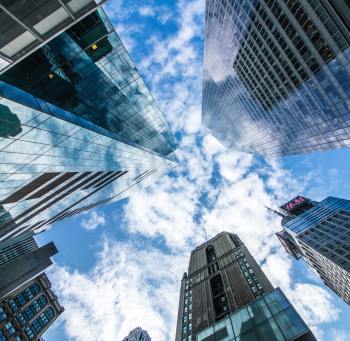Virtual reality isn’t just for games and fun anymore. A lot of folks think that’s all there is to it, but they’re missing out big time. This tech stretches way past just goofing off or diving into video games. It’s like having a secret door to a world where the possibilities are endless. For those who dare to peek behind the curtain, there’s a whole treasure trove waiting. Imagine learning, exploring, and creating in ways you’ve never thought possible. That’s the magic VR can bring into your life. So, why keep reading? Because I’m about to show you how jumping into virtual reality can open up new horizons you never even dreamed of.
This technology holds tremendous potential outside gaming and entertainment, and is promising to revolutionize how we work, shop, communicate, learn, travel or take care of our health.

As we speak, there are amazing applications of VR in a wide range of industries, some of which you would never have thought of before. For instance, in the medical sector, VR is being applied for training and education purposes with simulations that can allow students to practice and perform surgery without putting the life of a patient at risk.
This is just a drop in the ocean with regards to the value that virtual reality can add in our daily lives. With the following article, I will be trying to give a more exhaustive overview of how VR technology is shaking things up in various fields and industries.
1) Enhancing education and training
When we talk about education, the image of boring books and sleepy students may come to the minds of many. However, this is slowly changing with the introduction of VR and AR into the classroom and beyond (links to my previous articles about the topic)
Virtual reality experiences provide immersive and interesting platforms for students to interact with difficult and abstract concepts or even visit hazardous environments.
As a result, they gain more understanding and insight into topics that may have been otherwise difficult to grasp. For example, VR can be used to teach astronomy students about the solar system as well as distant galaxies by ‘visiting’ them through a pair of VR goggles and viewing each body from different angles and perspectives.

It gets better. VR technology provides different ways of modeling complicated task-performance behaviors in a safe environment. For instance, instead of letting a novice truck driver take the wheel, they can learn all the skills they need in a VR simulator without risking their lives and those of others.
Similarly, scientists can get ‘inside’ volcanoes or even a computer simulated black hole and gain more insight into the physical nature of our reality. Immersive VR experiences also enable medical students to practice their surgical skills without cadavers or live patients.
With the help of VR and tactile feedback, it is possible to perceive non-existent or inaccessible objects and even interact with them at different angles of view in a VR environment. As a result, from commercial aviation to military hardware, VR technology is being applied to place learners right in the middle of the action which improves the learning curves of students and saves costs for the trainers.
That being said, full mastery of any skill requires interaction with the actual environment. Moreover, we must note that a VR experience that grossly misrepresents the real world will lead to flawed training results.
2) VR is changing tourism and travel in a good way
Virtual reality provides the ability for tourists to experience guided tours of any location around the world. VR experiences enable people to ‘try before they buy’ various destinations and this is poised to dramatically change the tourism industry.
This is especially useful for smaller and less known travel destinations since travelers can experience what to expect before visiting. For an introduction to the VR travel apps and possibilities, check out the video below
Travel and hospitality firms are taking advantage of this aspect of virtual reality by showcasing various amenities, accommodations and fun activities.
The immersive technology allows potential guests to visit a resort or hotel and check out the various amenities before they book a room. Some companies have gone as far as mimicking the environment of the grounds by using realistic stimulants such as aromas and wind.
3) Retail has felt the benefits of VR too
in these modern times, most consumers are dependent on information from the internet. This is where they can find detailed descriptions and reviews of various products before making a buying decision. Top e-retailers are taking advantage and are now using VR to showcase various products from furniture to multiple shades of a shirt without having the product on-site.

VR also lets buyers test products before buying them, which has the additional benefit of providing useful consumer insight. Moreover, stores utilizing VR technology can enjoy less marketing costs and more effective analytics.
In the future, social shopping is set to go mainstream thanks to VR. This is where it will be possible for consumers to shop at the comfort of their own homes using VR goggles. The experience will be tailored to each consumer and even allow for things such as trying out various clothes after a body scan* or having your own personal shopping assistant.
The extra assistance and information will lead to a more spectacular shopping experience for the customer as well as enhanced advertising, sales and marketing campaigns for the business.
4) VR is improving the quality of healthcare in multiple facets
Even with leaps made in science and technology in the past 100 years, the human body still suffers from various disease and illnesses. As a result, the need for new and novel ways to tackle problems that have always plagued humanity is still very high.
VR technology has multiple ways of how it can improve healthcare up its sleeve. This a topic you can read about from my previous article Applications of VR in Medicine.
First, VR is fast becoming a preferred method for treating mental conditions such as post-traumatic stress. For example, it is now being used to help military service members overcome the stress that comes with war.
Using VR exposure therapy, patients are able to re-visit the traumatic event. This way, they can come into direct contact with what they fear in a safe and controlled environment and therefore, gain the opportunity to tolerate disabling stressors gradually.
VR is also being used to treat anxiety, depression and phobias, especially those caused by handling or being near certain animals or objects.
Lastly, VR holds potential in physical rehabilitation by providing patients with opportunities to perfect ambulatory or other skills in a clinic setting before going out to the real world.
All that being said, note that VR that becomes too realistic or proceeds too fast to simulate an experience before the patient can adjust is dangerous. In the case of mental health, it can cause the situation to be worse.
5) VR is changing architecture and building

VR and AR have the potential to change the way architects and planners design and build structures. First, VR allows architects and planners to play around with all aspects of a building, including the material, layout and even interior lighting. Moreover, their customers can take virtual tours of their new building or home and experience every detail even before construction begins.
VR is also beneficial to contractors and builders since it allows them to better comprehend what is required during the design process. Making changes in the planning and design phases can save massive amounts of money and ease communication.
For instance, using VR, engineers can display structural components, details and load-acting responses which can then be discussed. They can also predict and manage disasters such as floods or earthquakes through more vivid simulations.
6) Benefits of VR in sports
VR is changing how we play and enjoy sports for players and viewers alike from soccer to NASCAR. First, VR is now being used as a training tool which can be useful in measuring performance and analyzing game techniques from different perspectives.
VR also allows for collaborative training whether on-site or remotely. Coaches can plan tactics and overall strategy – including the simulation of various conditions such as rain and wind.
Secondly, VR is being used to improve the experience of the user in many sporting events. A few broadcasters are testing streaming content that is VR-ready, immersing the viewer right in the middle of the action. One day, it will be possible to sell “virtual tickets”.
7) VR holds some benefits even in finance
Who would have ever thought that VR would find its way in the financial sector? Well, financial institutions have not been left behind in this tech revolution.
For instance, Wells Fargo, the U.S. bank, became the first to test Facebook’s Oculus rift via special labs back in 2014. The aim was to allow clients to enter and conduct banking activities in ‘virtual branches’.
Other players in the market have launched VR apps that allow users access to their account activity and transactions remotely in a VR environment.
8) VR is changing tele-conferencing
When it comes to business meetings and conferences, VR has the potential to completely blow things up. Yes, you can connect remotely via messaging, emails or video calls, but have you tried a VR meeting? Think Skype for business or WhatsApp for business but on steroids.

VR allows for real-time event coverage – rather than seeing the other person on a screen, you will feel like you are in the same room.
This way, people who are crucial to business decisions can attend meetings and conferences in real time while physically being miles away. With the rise of the freelancing and gig economy, virtual meetings using VR may soon become the standard in most business processes.
This is also convenient since organizations can save both time and money that would have otherwise been spent on traveling.
9) VR is creating jobs
With current developments in VR technology, its utilization comes as an advantage to employment in general. The VR sector is not only employing VR programmers and specialists but also designers, marketers, lawyers, doctors and all kinds of professions in a bid to create more useful and realistic virtual environments and applications.
As more people and organizations get familiar with VR technology, more people will have the opportunity to work in this interesting and futuristic industry that is estimated to produce revenue close to $75 billion by 2021.
Concerns and Challenges of virtual reality
Currently, the biggest challenges facing VR include:
- The need for better tracking systems
- Finding more natural ways to let users interact with objects within the virtual environment
- It takes a long time to build a virtual space.
There are only a handful of companies that are still in operation since the earliest days of VR. However, most of them are small and do not have much capacity.
Similarly, very few companies are developing input devices that are specifically meant for VR applications. As a result, on several occasions, developers are forced to rely on and adapt technology that was designed for another discipline.
With regards to creating virtual worlds, it can take a lot of time and manpower to build a convincing virtual environment. The more detailed the environment, the more time it takes to create. It can take a team of VR programmers up to a year to just recreate a room accurately in virtual space.
Although VR comes with a myriad of benefits, nothing good is perfect, and there are some other concerns that critics and experts alike have raised.
Social and psychological implications
According to lead psychiatrists and philosophers, as an immersive technology, VR has the potential to leave long-lasting effects on the minds of users. In fact, experts believe that traumatic experiences via VR have the potential to cause adverse changes in perception and behavior.
Accidents
Virtual reality can become dangerous depending on the environment as well as the context in which it is being used. For instance, there have been cases in Japan where drivers have gotten into road accidents after being too immersed in their VR goggles.
Conclusion
Technologies such as the internet have changed everything about modern life, and that was only the beginning. The future of tech is constantly evolving, and it definitely looks brighter, both metaphorically and literally with technologies such as VR.
As clearly shown by some of the benefits outlined in this article, this technology can find applications across all fields, and is bound to change how we work and play.
However, it can also prove to be harmful and like any other tool, should be used with care and prudence. Per total, we believe that the modernization of various fields using VR has more upsides than downsides and we will be seeing the technology utilized more and more in the future.
